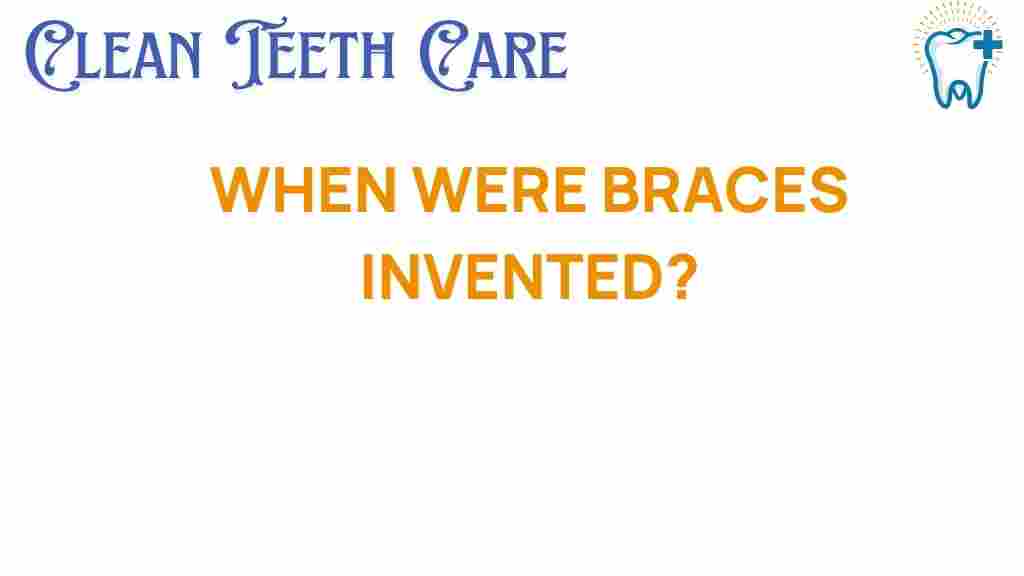Braces History: Unraveling the Journey of Teeth Straightening
When we think of dental care and oral health today, modern braces come to mind as the go-to solution for achieving that perfect smile. However, the history of braces is rich and fascinating, filled with innovation in dentistry that spans centuries. This article explores the journey of braces, from ancient dentistry practices to the advanced orthodontics we rely on today. Join us as we unravel the history of braces and their evolution into the dental appliances we know today.
The Origins of Braces: Ancient Dentistry
The concept of straightening teeth dates back to ancient civilizations. Evidence of early attempts at teeth straightening can be found in:
- Ancient Egypt: Archaeological findings reveal that Egyptians used primitive methods to align teeth. Some mummies have been discovered with metal bands around their teeth, indicating early forms of dental appliances.
- Ancient Greece: The Greeks, particularly Hippocrates, wrote about dental issues and attempted to correct misaligned teeth using rudimentary devices.
- Ancient Rome: Roman texts suggest the use of gold wire to bind teeth, showing that the quest for oral health has been a long-standing concern.
These early practices highlight the importance of oral hygiene and the desire for aesthetic improvement, setting the stage for future advancements in orthodontics.
The Renaissance and Beyond: Advancements in Orthodontics
As we moved into the Renaissance period, there was a significant leap in the understanding of human anatomy, including dental structures. Notable figures in this period contributed to the braces history:
- Pierre Fauchard: Often referred to as the father of modern dentistry, Fauchard published “Le Chirurgien Dentiste” in 1728, where he detailed the use of dental appliances to correct teeth positioning.
- Edward Angle: In the late 19th century, Angle developed the first classification of malocclusion and introduced various orthodontic appliances, laying the groundwork for modern braces.
These advancements not only improved teeth straightening techniques but also enhanced our understanding of oral health.
The Birth of Modern Braces
The 20th century marked a turning point in braces history with the introduction of materials and techniques that we recognize today. Key developments include:
- Metal Braces: The invention of stainless steel in the 1920s revolutionized orthodontics, leading to the widespread use of metal braces.
- Brackets and Archwires: The introduction of brackets and archwires allowed for more precise control over tooth movement, improving the effectiveness of braces.
- Clear Aligners: In the late 20th century, the development of clear aligners provided a discreet alternative to traditional metal braces, appealing to adults and teens alike.
These innovations in dentistry have made teeth straightening more accessible and effective, paving the way for better dental care and oral health.
The Process of Teeth Straightening with Braces
Understanding the process of getting braces can help demystify orthodontics. Here’s a step-by-step guide:
- Initial Consultation: Visit an orthodontist for a comprehensive evaluation, including X-rays and dental impressions.
- Treatment Plan: The orthodontist will develop a personalized treatment plan based on your dental needs.
- Fitting the Braces: During the next appointment, brackets will be attached to your teeth, and the archwire will be threaded through them.
- Regular Adjustments: You will need to return to the orthodontist every 4-6 weeks for adjustments to ensure your teeth are moving as planned.
- Retainers: Once the braces are removed, you will likely need to wear a retainer to maintain your new smile.
Each step is crucial in ensuring that your teeth are straightened effectively and safely.
Troubleshooting Common Issues with Braces
While braces are a fantastic tool for teeth straightening, they can come with challenges. Here are some common issues and solutions:
- Discomfort: It’s common to feel soreness after getting braces or adjustments. Over-the-counter pain relievers can help alleviate discomfort.
- Loose Brackets: If a bracket comes loose, contact your orthodontist for a quick fix.
- Food Restrictions: Certain foods can damage braces. Avoid hard, sticky, or chewy foods to prevent breakage.
Being aware of these potential issues can help you maintain your braces and ensure a smoother orthodontic experience.
The Importance of Dental Care During Orthodontic Treatment
Maintaining oral health is crucial while wearing braces. Here are some dental care tips to follow:
- Regular Brushing: Brush your teeth after every meal to remove food particles and plaque.
- Flossing: Use special floss threaders to clean between brackets and wires.
- Use Mouthwash: Antimicrobial mouthwash can help reduce plaque buildup.
Good dental hygiene practices can prevent cavities and ensure optimal oral health throughout your orthodontic treatment.
Conclusion: The Evolution of Braces and Future Prospects
The history of braces is a testament to human ingenuity and the commitment to improving oral health. From ancient dentistry to the cutting-edge orthodontics of today, braces have evolved significantly, providing countless individuals with the confidence that comes from a beautiful smile.
As we look to the future, innovations in dentistry continue to emerge. The development of digital orthodontics and 3D printing technology is likely to shape the next generation of braces. With these advancements, we can expect even more efficient and comfortable solutions for teeth straightening.
Understanding braces history not only highlights the evolution of dental appliances but also emphasizes the importance of dental care and oral health. Whether you’re considering braces or simply curious about their past, it’s clear that the journey of braces is far from over.
For more information on orthodontics and dental care, check out this useful guide on braces maintenance.
To explore further about innovations in dentistry, visit this resource on dental technology.
This article is in the category Treatments and created by CleanTeethCare Team
